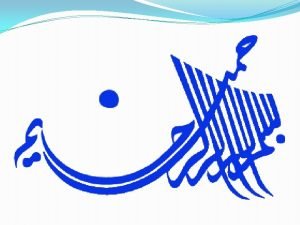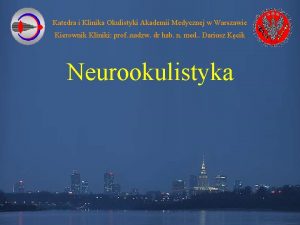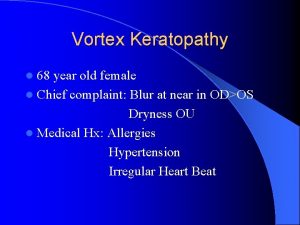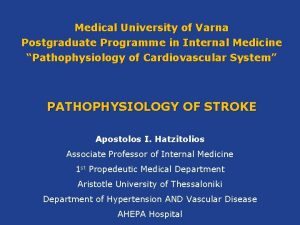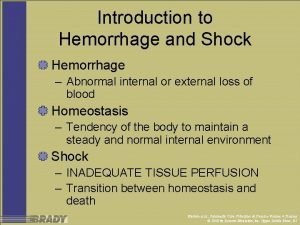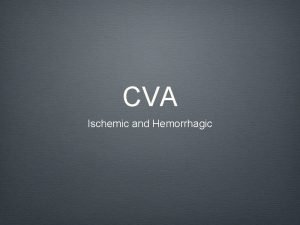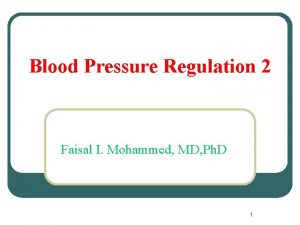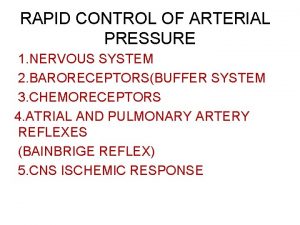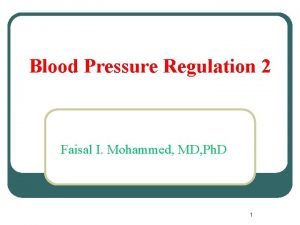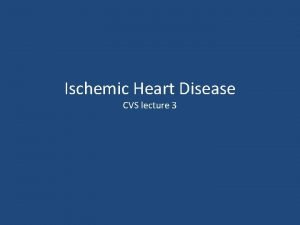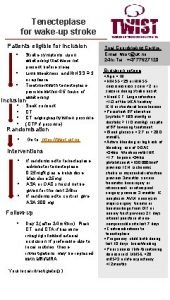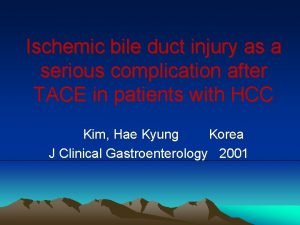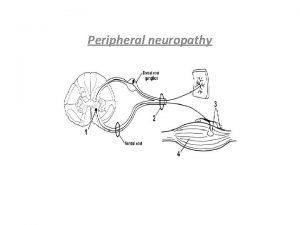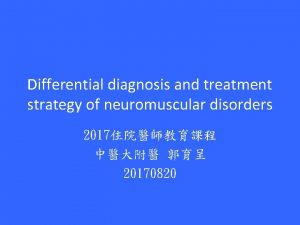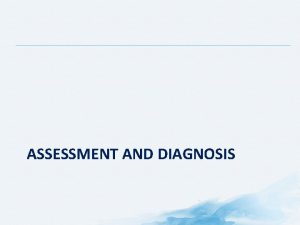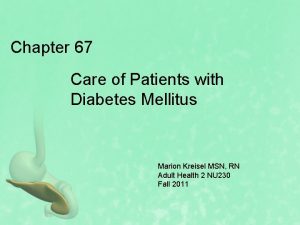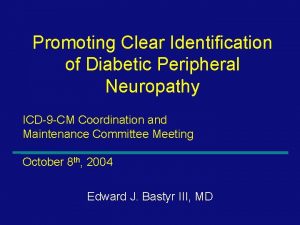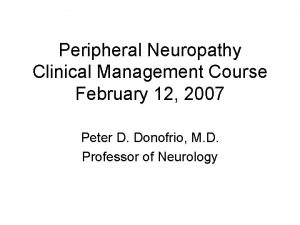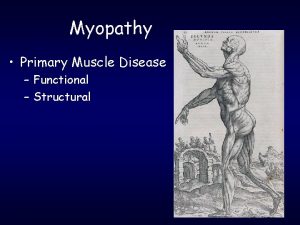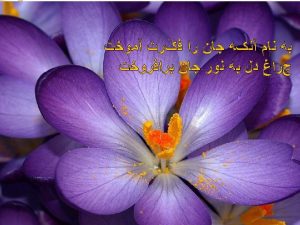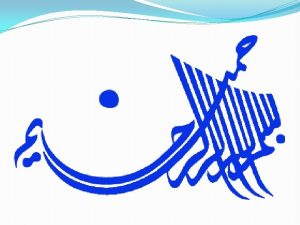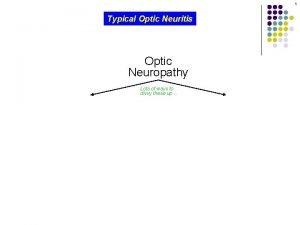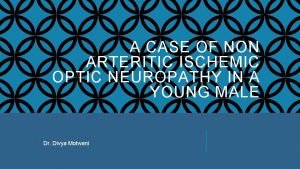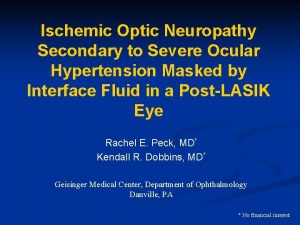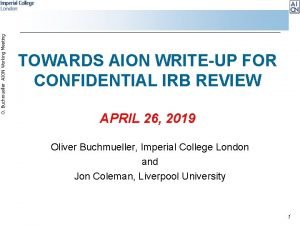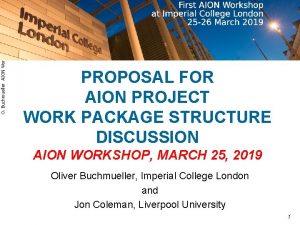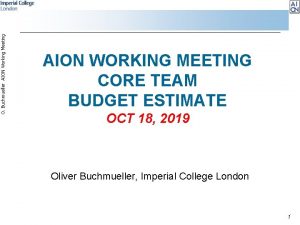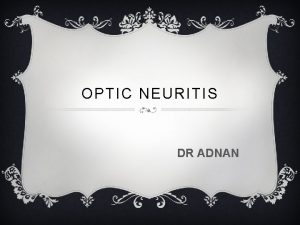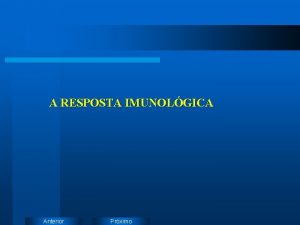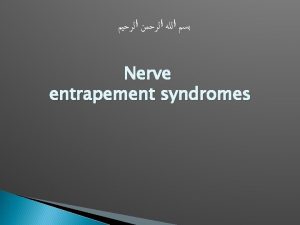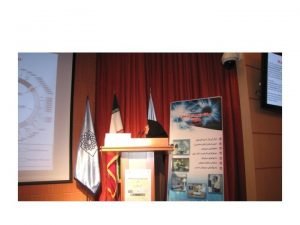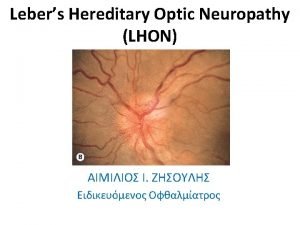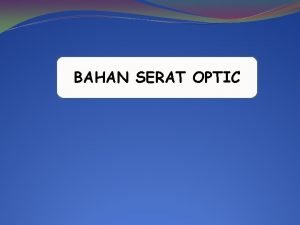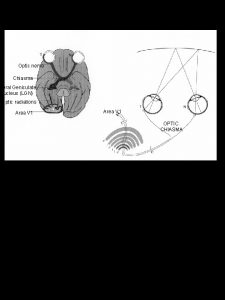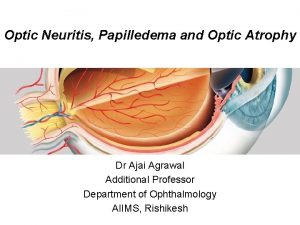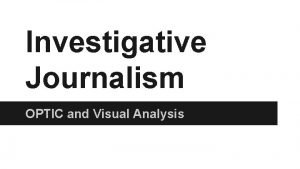Anterior ischemic optic neuropathy AION Most common over






















- Slides: 22

Anterior ischemic optic neuropathy (AION( Most common over 50 years n Painless monocular over hours to days n Visual acuity n Visual field n APD n


AION Arteritic AION is associated with giant cell arteries (GCA( n Nonarteritic AION n


AAION Is less frequent 5 -10% n Older patients (mean 70 yr( n Inflammatory and thrombotic occlusion post. Cilliary artery n Systemic symptoms n

Systemic Findings of GCA n Are usually present ¨ Headache, temporal and scalp tenderness ¨ Jaw claudication ¨ Malaise, anorexia, weight loss, fever, joint & muscle pain ¨ Ear pain

AAION Sever visual loss n Pale edema n Cotton wool spot n F. A. delayed choroidal filling n Normal cup. n


Treating AAION Immediate therapy is critical n Temporal artery biopsy may delayed treat n IV prednisolone 1 g/day for 3 -5 days n Then oral prednisolone 100 mg/day tapered 3 -12 month or more n

Major Goals of Therapy Prevent contralateral visual loss n Fellow eye involved 95% days or weeks n Affected eye improve somewhat n Avoid systemic vascular complication n Risk of recurrence is 7% so tapering must be slow and careful n

Nonarteritic Anterior ISchemic Optic Neuropathy (NAION( More common 90 -95% of AION n In younger age groups (mean age 60 yr( n Related to optic disc microcirculation n On awakening, noctural systemic Hypotension n Systemic symptoms are absent n


NAION V. A. > 20/200 in over 60% of cases n Palor is less common n Optic disk in other eye is small and small or absent cup. n 5 yr risk of other eye is 14. 7% (psuedfoster kennedy syd( n


Risk Factors of NAION Crowding of disk (disk at risk) n Systemic hypertension n Diabetes (young) n Smoking, hyperlipidemia n Hyperhomocysteinemia, platelet polymorphism, sleep apnea n Phosphodiestrase inhibitors (sildenafil or viagra) ? ? Hypotensive effect n

Differential Diagnosis of NAION Optic neuritis n Infiltrative optic neuropathies n Anterior orbital lesion n Diabetic papillopathy n


NAION Optic neurtis Age >50 <40 pain Unusual 92%+ Pupil APD+ VF Altitudinal Central Optic disk Edema 100% pale Common Edema 33% hyperemic Unusual Retinal hemorrhage F. A. MRI Delayed disk No delayed filling No optic nereve enhancement


Treatment of NAION Untreated case remain stable but recovery of 3 lines 31% after 2 years n Recurrence unusual 6. 4% n No proven therapy surgery no benefit n No proven prophylaxis n Asprin reducing incidence of fellow eye is unclear n


Age summary Mean 70 yr 60 yr Sex F>M F=M Symptoms Headache … None VA <20/200 60% >20/200 60% Fundus Normal cup pale edema ESR Mean 70 mm/hr Small cup Hyperemic edema Mean 20 -40 mm/hr C. R. P. Elevated Normal Natural history Rarely improved 31% improved 54 -95% fellow 12 -19% fellow eye Systemic steroids None proven treatment
 Optic ischemic neuropathy
Optic ischemic neuropathy Stasis papillae
Stasis papillae Aion core
Aion core Aion fundoscopy
Aion fundoscopy Mechanism of ischemic stroke
Mechanism of ischemic stroke Cns ischemic response
Cns ischemic response Stroke protocol
Stroke protocol Ischemic vs hemorrhagic stroke
Ischemic vs hemorrhagic stroke Cns ischemic response
Cns ischemic response Mean arterial pressure
Mean arterial pressure Cns ischemic response
Cns ischemic response Pathophysiology of ischemic heart disease
Pathophysiology of ischemic heart disease Antianginal drugs classification
Antianginal drugs classification Heart disease
Heart disease Wake up stroke definition
Wake up stroke definition Ischemic bile duct injury
Ischemic bile duct injury Mononeuritis multiplex
Mononeuritis multiplex Albuminocytologic dissociation
Albuminocytologic dissociation Painful neuropathy
Painful neuropathy Neuropathy test
Neuropathy test Diabetic neuropathy
Diabetic neuropathy Diabetic neuropathy schaumburg
Diabetic neuropathy schaumburg Myotonia congenita
Myotonia congenita
